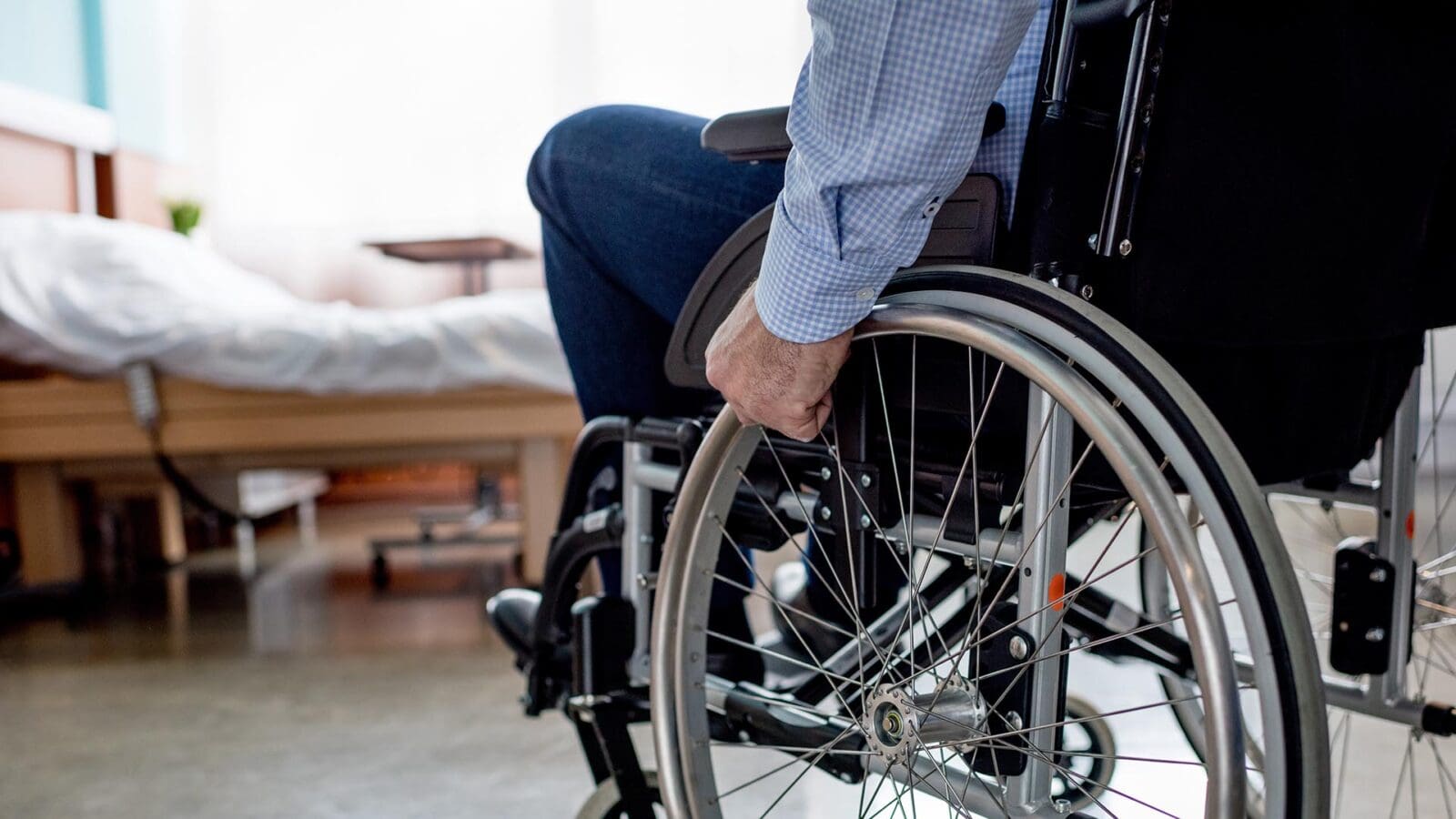Absolutely the best attorney for getting your VA benefits. After 7 years of denial, I found Brendan Garcia of VetLaw, He reviewed my case, set up a plan , scheduled my video hearing in front of a Veteran law judge, flew out to Phoenix to be there with me during the hearing. Hired a doctor to help draft a report to help my case. When all the smoked cleared, I’m now collecting max disability monthly, back pay beyond my wildest dreams. Brendan Garcia never stopped. He is an expert in Veterans law. Best decision of my life was to have him on my side. Bar none, Brendan is a terrific VA benefits attorney!
Veterans Disability for Arm & Shoulder Injuries
Veterans are required to perform strenuous, demanding, and even dangerous tasks as a part of their military service. As a result, it is not uncommon for a veteran to sustain an arm or shoulder injury that impacts their work, their lives, and their overall health. Fortunately, VA disability benefits may be available to help you manage the financial, physical, and emotional consequences of your service-related condition.
Securing these benefits can be time-consuming and difficult, however, leading many veterans to seek assistance from VetLaw. Whether you are in the process of filing a VA physical condition claim, trying to determine your VA rating for shoulder injuries or arm injuries, or wish to appeal an unfair denial of your claim, our team of experienced attorneys can help. To learn more about our practice, consider contacting us today.
What Are the Common Arm and Shoulder Injuries that Affect Veterans?
Arm and shoulder injuries are common amongst veterans, as military service often involves demanding physical activity such as lifting heavy objects, transporting heavy equipment, and engaging in strenuous training exercises. Combat incidents are also commonly associated with arm and shoulder injuries. Specifically, some of the most common arm and shoulder injuries that affect veterans include:
- Amputations or loss of use. In extreme situations, injuries can result in the amputation of the arm.
- Shoulder replacement. Damage that is irreparable in nature may require a replacement of the shoulder. Replacements can result in a limited range of motion or loss of strength.
- Dislocation or separation. The shoulder may dislocate or separate from the arm, causing pain, limited range of motion, weakness, or total inability to move the shoulder and arm.
- Rotator cuff tear. The rotator cuff includes several different muscles and tendons that join the upper arm to the shoulder blade. If one or more of these muscles or tendons are torn, it can lead to chronic pain and weakness.
- Tendonitis. When the rotator cuff and biceps tendon become inflamed, tendonitis may develop. This condition causes aching and stiffness around the affected joints.
- Bursitis. The bursae provide cushion to the bones, muscles, and tendons near the joints. If the bursae become inflamed, bursitis can develop, resulting in pain, swelling, and weakness.
Suffering from any of these conditions can make it difficult to work or perform daily activities, thereby impacting your quality of life and ability to earn an income. Many veterans seek disability benefits to offset the consequences of arm and shoulder injuries, but understanding how the VA regards these injuries can be complicated.
Does the VA Consider Arm and Shoulder Injuries to Be Disabilities?
Yes, as long as you can connect your arm and shoulder injury to your military service. To qualify for disability benefits through the VA, a veteran must first establish that their disability is connected to their time in the military. Proving this connection can be difficult, requiring the veteran to produce a great deal of evidence regarding the severity of the condition and how their injuries interfere with their daily lives.
Generally, to prove a service-connection, veterans must satisfy the following three criteria:
- Medical evidence of their disability. This can include diagnosis and treatment records, test results, and imaging reports, for instance.
- A service-related event or incident that led or contributed to the arm and shoulder disability.
- Nexus (connection) between the disability and the service-related event or incident.
As long as a veteran can meet these three requirements, they may be able to receive compensation for their disability. The amount of compensation that a veteran receives varies depending on the veteran’s unique VA rating for shoulder injuries and/or VA rating for arm injuries.
What Are the VA Ratings for Arm and Shoulder Injuries?
The vast majority of arm and shoulder injuries are rated using 38 CFR § 4.71a for conditions of the musculoskeletal system and 38 CFR § 4.73 for muscle injuries. The VA rating that you receive for your injuries depends on the severity of your condition and the extent to which the disability impacts your life. The ratings for different arm and shoulder injuries may be assigned in the following ways:
- Shoulder replacement: for the year immediately following a shoulder replacement, you may receive a 100% disability rating. After you have healed, you will be assigned a new rating that reflects your level of function. This rating can range from 30% to 60% in most cases.
- Shoulder dislocation: depending on whether you regularly dislocate your shoulder and the arm where the dislocation occurs, you may receive a VA rating between 10% and 30%.
- Amputation: in the majority of cases, veterans who experienced an amputation will receive a VA rating between 70% and 90% depending on whether the amputation is below or at the deltoid. Veterans who have had their entire arm amputated will receive a disability rating of 100%, regardless of whether it is the dominant or non-dominant arm.
Range of motion, use of muscle, and loss of strength will all be evaluated to assign a VA rating for shoulder injuries and arm injuries. Your attorney can provide greater detail on the VA Diagnostic Codes and how different injuries are rated under these standards.
How Should You Handle Your Arm and Shoulder Injuries as a Veteran?
If you have not done so, you may request a Compensation & Pension (C&P) exam for your arm and shoulder injury. At this exam, a VA physician or VA-contracted physician will assess your injuries. The results of your C&P exam may be integral to improving your VA rating for arm injuries and/or shoulder injuries. A favorable opinion will support the claim that your disability was caused by your service and help strengthen your claim.
What If the VA Denies Your Claim for Arm and Shoulder Injuries?
The VA may deny your claim for arm and shoulder injuries for a variety of reasons. Depending on your case, there may be several actions you can take to strengthen and continue your claim. One such action is to submit a Supplemental Claim to provide additional evidence that may change the VA’s initial decision or improve your VA rating for shoulder injuries. Alternatively, a Higher-Level Review may be more suitable if you believe an error occurred during the application process. Finally, you may take your case to the Board of Veterans’ Appeals. At this level, there are several strategies that can be used to appeal the denial. Your VetLaw attorney can help guide you through the appeals process and ensure you secure the benefits you deserve.
How an Attorney Near You Can Help With Your VA Claim Denial for Arm and Shoulder Injuries
If you were denied VA disability benefits for your shoulder or arm injuries, we are here to help. At VetLaw, we provide high-quality legal advocacy and representation to veterans at all levels of the claims and appeals processes, making us the law firm of choice for individuals across the United States. We have helped veterans compile the necessary evidence to support their claims, improve their VA rating for arm injuries and shoulder injuries, and secure the disability benefits they need. If you are feeling stuck in the VA process and wish to resolve your case as quickly and efficiently as possible, consider scheduling your free case review with us today.










